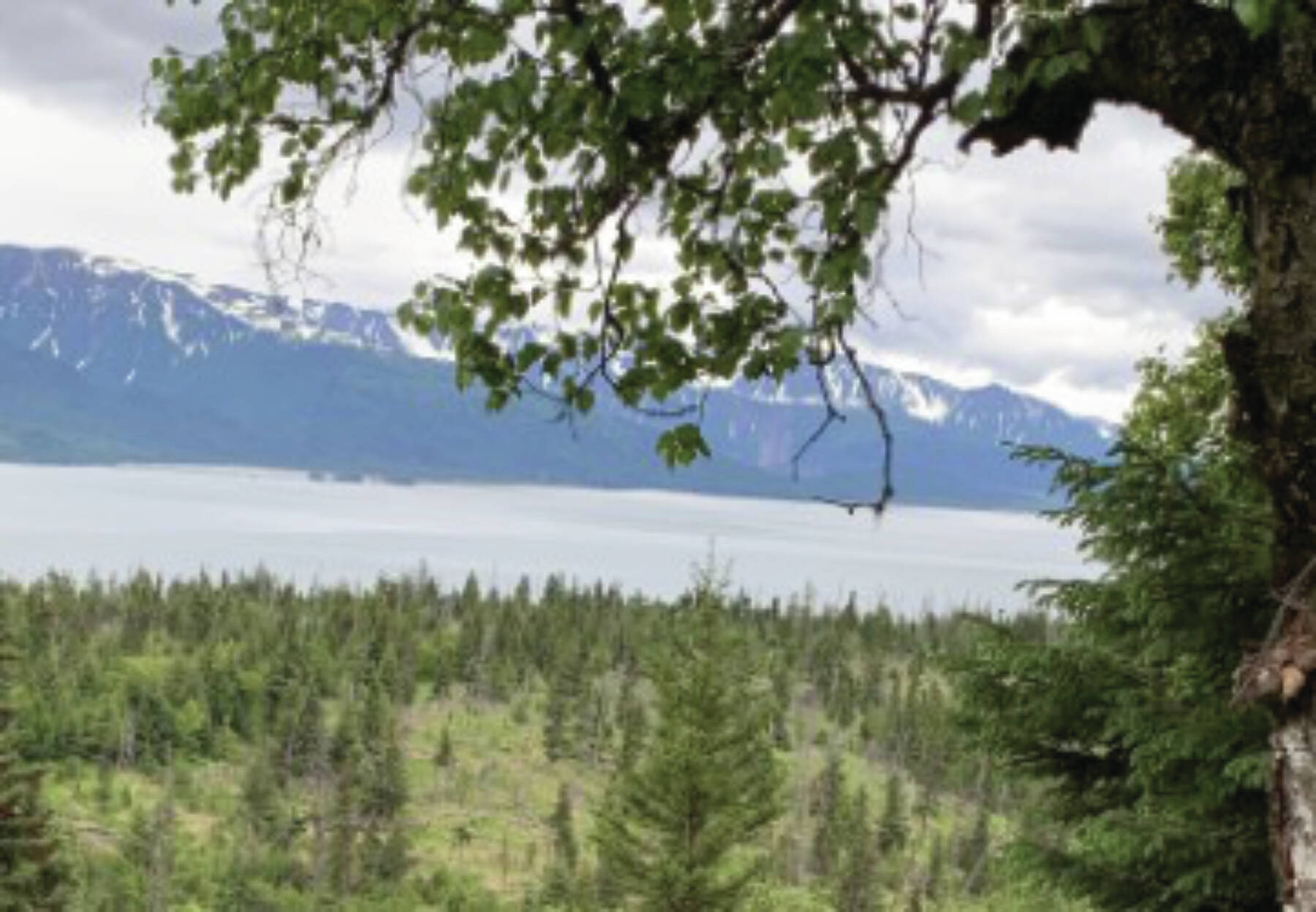Friends of Kachemak Bay State Park and Homer Cycling Club on Tuesday, July 9, held a work session to update members of the public on plans to establish a public use trail system in the Cottonwood-Eastland unit of Kachemak Bay State Park.
The meeting was facilitated by Cameale Johnson and Cooper Freeman, coordinators from the two organizations, with a presentation by Zoom from Eddie Kesslar from Ptarmigan PTrails, a Pacific Northwest trail construction company based out of Oregon that has recently finished mapping 10 miles of trail in the park. Approximately 20 people attended the meeting.
This 2,643-acre section of park land is located at Mile 17 on East End Road near Elmers Way and Ratone Street. There has been some controversy regarding the trail’s establishment, with land owners in the area expressing concern regarding property and potential trail access from roads that are not borough maintained, although they are publicly accessible. The roads are available for public use but property owners on Ratone don’t want excess parking on the roads.
Meg Cicciarella attended the meeting on Tuesday and identified herself as representing the Cottonwood Eastland neighbors. She expressed concern about the topic of parking, as she has done at meetings past. There are 10 private properties in the neighborhood, according to Cicciarella.
Plans for establishing a parking location for the trail system have been in discussion since an initial Interagency Land Management Agreement with the Alaska Department of Natural Resources, the hierarchy organization for Alaska State Parks, since 2002.
Due to funding limitations with State Parks and general bureaucratic challenges, the official paperwork has not yet been resolved, Johnson said. The ILMA was reapplied for by DNR in 2020 but was declined due to complications with House Bill 52. House Bill 52 was a land parcel exchange agreement related to Kachemak Bay State Parks and the Tutka Bay Hatchery, that would provide Cottonwood with additional land parcels that would help facilitate both the parking and eventual intention of campground sites. DNR Mining and Water wouldn’t process the application until the bill was resolved.
H.B. 52 did not pass and the newer ILMA was still not granted. Johnson said the two organizations applied again earlier in 2024 in hopes of establishing a set parking location.
More recently, in 2022, public comments were collected from the Department of Natural Resources looking for community input on opinions for the trails; these are now available through the DNR website with all identifiers removed.
Approximately 50 people provided testimony. The comments were primarily in support of trail development for legal and sustainable local access.
The 13 pages of testimony are available through the DNR website at: https://dnr.alaska.gov/parks/aspunits/kenai/pdf/cottonwoodeastlandcomments.pdf. All identifiers for the comments are removed.
“We had an overwhelming support for trails in general in Cottonwood Eastland Park, and so that public response provided the impetus for us to go ahead and hire someone to come up and look at the park and do trail layout and provide guidance to us on how we should go about developing those trails in the park,” Johnson said.
The trails, as they are designed currently by Ptarmigan Ptrails, are mixed designation of hiking, biking and equestrian trails. As of last Tuesday, Kesslar had marked about 10 miles of trails. He said during the meeting that he considered mapping more “but wanted to start with a holistic plan and not throw in future additional planning. Everything that’s marked out now is a great cohesive unit we’ve got.”
In a conversation with the Homer News, Johnson said that the Kachemak Bay State Park is currently a cost to the state and that’s why Friends of Kachemak Bay State Park and the Homer Cycling Club have moved forward with design and possible construction of a trail system, with the support of DNR and the park itself.
Eric Clarke is the trails specialist from the park and one of the few employees for the state park system in the Homer area.
There are currently social use trails within Cottonwood, but as Johnson pointed out, “a park-approved trail is one that is considered sustainable and complies with Alaska State Parks Trail Management Policy.”
Kesslar has the capacity to provide that, she said.
Johnson said she has been aware of the neighborhood parking controversy and has “made it a personal mission to move parking out of neighborhood and have remained adamant in my support of no parking there,” she said.
In October of 2021, Johnson obtained permission from the borough to clear the pullout off East End Road at Mile 17.4. It was originally created for emergency response equipment during the large 2009 fire. This is now the current temporary location for parking access.
More specific details on the Cottonwood Eastland Management Unit are available in the Kachemak Bay State Park Plan, most recently updated in 2022.
The management intent within the plan states that “more intensive multi-modal trail-based recreation opportunities should be facilitated where access and terrain can support this level of use with minimal impact to resources. A campground facility with recreational vehicle camping opportunities should be developed.”
As Johnson pointed out, most of the park trails on the other side of Kachemak Bay are not easily accessible to many people and many of them have a steep terrain rising straight from the beach into the mountains.
She noted that the goal of the two organizations with an interest in these trails is to provide an opportunity for people on this side of the bay to enjoy some of natural environment without needing a boat to access the trails.
The next public meeting with another update on trails from Kessler will be held at Islands and Oceans Visitor Center on Aug. 14 at 5 p.m. Homer Cycling Club plans to post an updated map, including the new proposed parking location, before that meeting. It can be found here: www.homercyclingclub.org/cottonwoodeastland.
More information on Kachemak Bay State Parks, in general, is available via in their handbook, updated most recently in 2022: https://dnr.alaska.gov/parks/plans/kbay/2022/kbay-2022-complete.pdf.


